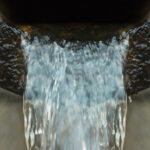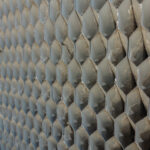Biological Concerns with Nitrite Based Programs
This article is Part 2 of 3 of a series on nitrite closed loop treatment programs.
In Part 1, we introduced nitrite programs closed loops, discussing how they perform and some of the issues to be aware of with these programs. In Part 2, we will take a deep dive into the nitrogen cycle and how that can impact nitrite based programs, or quite simply, what are the technical reasons behind why your nitrite residuals keep disappearing.
As a review, the reactions that affect nitrite are controlled by varying forms of bacteria that use nitrite as food. Some fungi and other forms of microorganisms have the ability to react with other forms of Nitrogen. The nitrite ion (NO2–) is included either as a primary food source or as an intermediate food source in a number of autotrophic reactions. Within the context of the Nitrogen Cycle there are three microbiological processes that are relevant to the use of Sodium Nitrite as a corrosion inhibitor in closed recirculating water systems.
Nitrification
Nitrification is a term used to describe a two-step process involving the nitrite ion. Step 1 involves the oxidation of ammonia ions to nitrite in the following manner:
NH3 + OHР+ 3/2 O2 → ’NO2Р+ 2H2O
This step of the nitrification process usually occurs only when at least 100 ppm of NH3 is present. Because ammonia is not generally found naturally in such high concentrations, this step of the nitrification process is generally found only in systems with process ammonia contamination.
Step Two of the nitrification process involves the oxidation of nitrite to nitrate. This reaction proceeds as follows:
NO2– + 1/2 O2 ‚Üí NO3–
This reaction occurs naturally when nitrite ions are in the presence of oxygen. Certain bacteria, the most common of which come from the genera Nitrobacter, are able to use enzymes to catalyze this oxidation re- action. The energy produced is then used within the cells to assimilate carbon dioxide.
Each step of the nitrification process is carried out by separate microbial populations. Nitrifying bacteria are most commonly found in soil where they are an important part of the earth’s natural fertilizing system. The nitrification process is aerobic and will not proceed under anaerobic conditions.
Denitrification
Denitrification refers to a process whereby nitrite ions are converted into molecular nitrogen (N2). Denitrification proceeds through nitrite to the formation of nitric oxide, nitrous oxide and finally molecular nitrogen.
NO2Р→’ NO’ → N2O’ → N2
Denitrification is a facultative anaerobic process. In this instance, facultative means denitrification can occur under conditions of no oxygen or conditions of extremely low oxygen concentration. Denitrifying bacteria are generally found in stagnant water. Low flow or no flow areas within a closed recirculating water system, such as dead legs and occasionally used piping, would be ideal areas for denitrifying bacteria to flourish.
Molecular nitrogen can be converted to ammonium ions through a process called Nitrogen Fixation. In nitrogen fixation the ammonium ions are used to assimilate amino acids and proteins. Nitrogen fixation is an aerobic process. However, aerobic nitrogen-fixing bacteria can withstand extremely low levels of oxygen.
Nitrite Ammonification
Nitrite ammonification refers to the process where nitrite ions are converted to ammonium ions via hydroxylamine (NH2OH) in a reduction reaction:
NO2’- → NH2OH’ → NH4+
Ammonium production from this reaction occurs at a relatively high rate. The enzyme responsible for facilitating this reaction is inhibited by the presence of oxygen making this a strictly anaerobic process. Again, areas such as dead legs and occasionally used piping are ideal areas for this to occur.
As a troubleshooting tool, keep these processes in mind when you start to see nitrite residuals dropping with no apparent water losses and a possible increase in biological activity. While this may be the in depth technical explanation as to why and how your nitrite residuals keep disappearing, the bottom line is that bugs may be out of control in your closed loop.
In Part 3 of this series, we will discuss the consequences of an out of control system and how to remedy the situation.
For more information on the nitrogen cycle and how it can impact nitrite based closed loop water treatment programs, Download our guide.



